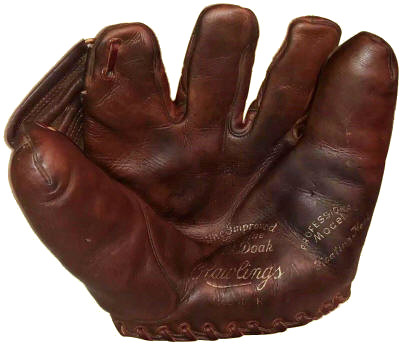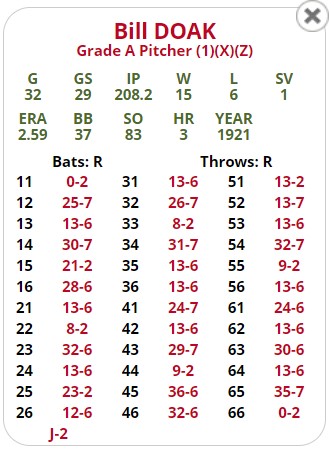
“Spittin’ Bill” Doak pitched 16 professional seasons, mostly for the St. Louis Cardinals, and won 169 career games. The right-hander led the NL in ERA in 1914 (1.72) and 1921 (2.59). Doak’s main pitch was the spitball, which was banned in 1920. However, Doak was one of 17 pitchers permitted to continue throwing the pitch until retirement.

While marginally noteworthy, Doak’s true legacy took place in 1919 when he approached the Rawlings Sporting Goods Company with a new baseball glove concept. Before Doak, baseball gloves basically were used as protective equipment to prevent fielders’ hands from getting crushed by hard hit balls. Doak’s idea was to put webbing between the thumb and first finger of the glove to form a ball catching pocket.
“By enlarging the thumb, bringing it up even with the first finger, a larger pocket is formed, and many balls are caught on the very tips of the thumb and first finger,” explained Doak. Rawlings introduced the “Bill Doak” model in 1922 and it remained available until 1952, with little modification.

During his career, Doak was an A grade pitcher for three seasons and a B grade six. That’s a very good pitcher for any baseball club. As a matter of fact, Doak still appears in the Cardinal record books. Doak’s 32 career shutouts still rank second all-time in St. Louis franchise history behind Hall of Famer Bob Gibson. However, by inventing the modern baseball glove, Doak truly left his mark and was a baseball game changer.
Recommendations: If you’re interested in more about the history of baseball gloves, consider checking out these books:



